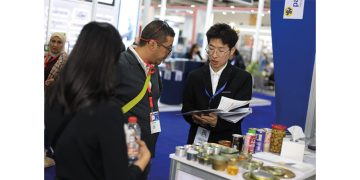The following Turkish apricot crop information has been provided by Banu Er of Doraintrade which is working as an agent, broker and consultant at international markets targeting to establish a strong link between producers and buyers on trust basis. Doraintrade has been tracing the market on behalf of producers and buyers in order to give feedback and market reports from the source regularly. The crop information follows:
Turkish Apricots 2017 crop harvest started in the production area of Malatya. This year, harvest was around 2 weeks later than usual due to cooler and rainy spring season and necessary hot and dry weather for harvest arrived to the production areas.
As every year, at the beginning of the harvest, we have visited wide production areas in Malatya, performed our own survey and met with the farmers to hear their expectations and learn their new crop production behaviors.
Beginning of the harvest by shaking the tress with machinery or by hand and collecting the fresh apricots from the plastic shields covered at the bottom of trees.
If the production will continue, dried natural or organic Apricots, fresh products are spread over the shield for drying process immediately.
When the Apricots dry for 2-3 days they become soft enough for pitting without damage.
Pitting process is the most costly process for labor expenses in the orchards. Women workers can pit max 5-6 cascades after whole day work. Unfortunately, there is no still efficient machinery for Dried Apricots pitting without certain damage to the fruits.
After pitting process Natural apricots lie under the sun lastly for few days more in order to come to the last stage and ready for raw material markets.
On the other hand, conventional So2 Dried Apricots are stored in So2 burning tents of rooms just after the harvest.
Depending on desired high or low So2 content at final product. Application and duration varies in the orchards.

Drying and pitting process continue after So2 application for yellow color Dried Apricots as same as Natural apricots. Because it takes very long time to lose the So2 level for apricots (loose only 50-100ppm per month with good air circulation warehouses) after dried, growers mainly apply So2 according to the requests from the packers relating to export market’s So2 regulations.
Finally dried Apricots are stored in the orchard warehouses and ready for market as raw materials to be further processed in factories.
Although official declaration of estimated production quantity for Malatya dried apricots in 2017 crop was around 142,000 mtons, general expectation of the region’s biggest packers as well as ours is above 160,000 mtons production in new crop. Meanwhile, estimated Natural production would be around 10-15,000 mtons.
There is a reality that Turkish Dried Apricots will have enough availability with all sizes this year. From our past experiences we can estimate price offers will be more settled and probably lower when the big raw material quantities are delivered.
Same as previous years, organic buyers may need to contract as soon as possible in order to cover annual needs but for conventional business being no rush may lead the overseas buyers to better position for pricing in coming months.
According to physical defects rate in 2017 crop, price difference between Extra class, Class1 and Industrial may appear to be big. While Turkey has both extra quality and industrial grade enquiries from overseas markets, we believe the shipments will carry on in balance for all different qualities and sizes.
We hope to have a good crop year for Turkish Apricots 2017 and we would like to help you for your enquiries from globally unique taste of Malatya Dried Apricots.
Below Chart shows figures of Turkish dried fruits varieties tonnage, average export prices with its comparison with last year figures.
Export Figures Of Turkish Sultana Raisins / Dried Apricots/ Dried Figs in Comparison with same period last year

#turkhishapricots, #natural, #excellency
















